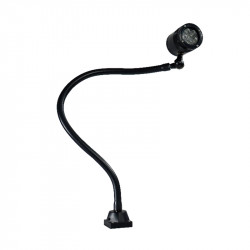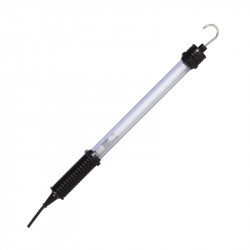Jūs turite būti prisijungę
-
sugrįžtiX
-
Komponentai
-
-
Category
-
Puslaidininkiai
- Diodai
- Tiristoriai
-
Elektroizoliuoti moduliai
- Elektrai izoliuoti moduliai | VISHAY (IR)
- Elektrai izoliuoti moduliai | INFINEON (EUPEC)
- Elektrai izoliuoti moduliai | Semikronas
- Elektrai izoliuoti moduliai | POWEREX
- Elektrai izoliuoti moduliai | IXYS
- Elektrai izoliuoti moduliai | POSEICO
- Elektrai izoliuoti moduliai | ABB
- Elektrai izoliuoti moduliai | TECHSEM
- Eikite į subkategoriją
- Lygintuviniai tilteliai
-
Tranzistoriai
- Tranzistoriai | GeneSiC
- SiC MOSFET moduliai | Mitsubishi
- SiC MOSFET moduliai | STARPOWER
- „ABB SiC MOSFET“ moduliai
- IGBT moduliai | MITSUBISHI
- Tranzistorių moduliai | MITSUBISHI
- MOSFET moduliai | MITSUBISHI
- Tranzistorių moduliai | ABB
- IGBT moduliai POWEREX
- IGBT moduliai INFINEON (EUPEC)
- Silicio karbido puslaidininkiniai elementai
- Eikite į subkategoriją
- Valdikliai
- Galios blokai
- Eikite į subkategoriją
- Elektrinių dydžių keitikliai
-
Pasyvūs komponentai (kondensatoriai, rezistoriai, saugikliai, filtrai)
- Rezistoriai
-
Saugikliai
- ABC ir AGC serijos miniatiūriniai saugikliai elektronikai
- Greitaeigiai cilindriniai saugikliai
- Uždelsimo elementai su GL/GG ir AM charakteristikomis
- Ultragreiti intarpai - saugikliai
- Didžiosios Britanijos ir JAV standartų greitaeigiai saugikliai
- Europos standarto greitaeigiai saugikliai
- Saugikliai geležinkeliui
- Aukštos įtampos saugikliai
- Eikite į subkategoriją
-
Kondensatoriai
- Kondensatoriai varikliams
- Elektrolitiniai kondensatoriai
- Snubbers tipo kondensatoriai
- Galios kondensatoriai
- Kondensatoriai DC grandinėms
- Kondensatoriai galios kompensavimui
- Aukštos įtampos kondensatoriai
- Kondensatoriai indukciniam kaitinimui
- Impulsiniai ir energijos kaupimo kondensatoriai
- DC LINK kondensatoriai
- AC / DC grandinių kondensatoriai
- Eikite į subkategoriją
- Slopinimo tinklo filtrai
- Superkondensatoriai
- Apsauga nuo viršįtampių
- TEMPEST spindulių aptikimo filtrai
- Eikite į subkategoriją
-
Relės ir kontaktoriai
- Relių ir kontaktorių teorija
- Trijų fazių puslaidininkinės AC relės
- Puslaidininkinės DC relės
- Reguliatoriai, valdikliai ir jų priedai
- Soft starteriai (minkšto paleidimo įrenginiai) bei reversiniai kontaktoriai
- Elektromechaninės relės
- Kontaktoriai
- Rotaciniai jungikliai
-
Vienos fazės puslaidininkinės AC relės
- AC vienfazės puslaidininkinės relės 1 | D2425 | D2450 serijų
- AC vienfazės puslaidininkinės relės CWA ir CWD serijų
- AC vienfazės puslaidininkinės relės CMRA ir CMRD serijų
- AC vienfazės puslaidininkinės relės PS serijos
- AC puslaidininkinės dvigubos ir keturgubos relės D24 D, TD24 Q, H12D48 D serijų
- Vienfazės puslaidininkinės relės gn serijos
- AC vienfazės puslaidininkinės relės CKR serijos
- AC vienfazės relės DIN bėgiams ERDA ir ERAA serijų
- Vienfazės kintamosios srovės relės, skirtos 150A srovei
- Dvigubos kietojo kūno relės, integruotos su radiatoriumi DIN bėgiui
- Eikite į subkategoriją
- Vienos fazės puslaidininkinės AC relės spausdinimo plokštėms
- Interfejsų relės
- Eikite į subkategoriją
- Indukciniai elementai
- Radiatoriai, varistoriai, termo apsauga
- Ventiliatoriai
- Kondicioneriai, elektros spintų aksesuarai, aušintuvai
-
Baterijos, įkrovikliai, buferiniai maitinimo šaltiniai ir keitikliai
- Baterijos, įkrovikliai - teorinis aprašymas
- Ličio jonų baterijos. Individualios baterijos. Baterijų valdymo sistema (BMS)
- Akumuliatoriai
- Akumuliatorių įkrovikliai ir priedai
- UPS atsarginis maitinimo šaltinis ir buferiniai maitinimo šaltiniai
- Fotoelektros keitikliai ir priedai
- Energijos kaupimas
- Kuro elementai
- Ląstelės litio-joninės
- Eikite į subkategoriją
-
Automatikos komponentai
- Spiralift keltuvai
- Futaba dronų dalys
- Galiniai jungikliai, mikrojungikliai
- Jutikliai, keitikliai
- Pirometrai
- Skaitikliai, laiko relės, paneliniai matuokliai
- Pramoniniai apsaugos įrenginiai
- Šviesos ir garso signalizacija
- Terminio vaizdo kamera
- LED švieslentės
- Valdymo aparatūra - mygtukai ir jungikliai
- Eikite į subkategoriją
-
Laidai, pynės, laidų apsauginės žarnos, lankstūs sujungimai
- Laidai
- Daugiagisliai laidai
-
Kabeliai ekstremalioms sąlygoms
- Kompensaciniai ir prailginimo kabeliai
- Laidai termoporoms
- PT jutikliams prijungimo laidai
- Daugiagysliai laidai temp. -60C iki +1400C
- Vidutinės įtampos kabeliai
- Uždegimo laidai
- Šildymo laidai
- Viengysliai laidai temp. -60C iki +450C
- Geležinkelio kabeliai
- Šildymo kabeliai Ex zonoms
- Eikite į subkategoriją
- Apsaugos vamzdeliai
-
Pintinės
- Plokščios pintinės
- Apvalios pintinės
- Plokščios labai elastingos pintinės
- Apvalios labai elastingos pintinės
- Cilindro formos vario pintinės
- Vario cilindrinės pintinės su apsauga
- Elastingos įžeminimo juostos
- Cinkuoto ir nerūdijančio plieno cilindrinės pintinės
- PCV izoliuotos vario pintinės - temperatūra iki 85 C
- Plokščios aliuminio pintinės
- Sujungimo komplektas - pintinės ir vamzdeliai
- Eikite į subkategoriją
- Aksesuarai geležinkeliams
- Kabelių antgaliai
- Lanksčios izoliuotos šynos
- Daugiasluoksnės lanksčios šynos
- Laidų pravedimo sistemos (PESZLE)
- Eikite į subkategoriją
- Žiūrėti visas kategorijas
-
Puslaidininkiai
-
-
- Tiekėjai
-
Pritaikymų sąrašas
- CNC staklės
- Energetika
- Energy bank
- Indukcinis kaitinimas
- Įranga ir komponentai sprogimo pavojaus zonoms (Ex)
- Kasyklos, metalurgijos ir liejimo pramonė
- Laboratoriniai ir moksliniai matavimai
- Maitinimo šaltiniai (UPS) ir lygintuvinės sistemos
- Medienos džiovinimo ir apdirbimo mašinos
- Nuolatinės ir kintamos srovės pavaros (keitikliai)
- Paskirstymo, valdymo ir telekomunikacijos spintų įranga
- Plastmasių liejimo mašinos
- Poligrafija
- Pramoninė apsaugos įranga
- Pramoninė automatika
- Suvirinimo aparatai
- ŠVOK automatika
- Temperatūros matavimas ir nustatymas
- Tramvajų ir traukinių pavaros
- Varikliai ir transformatoriai
-
Montavimas
-
-
Induktoriai
-
-
Indukciniai įtaisai
-
-
Aptarnavimas
-
- Kontaktai
- Zobacz wszystkie kategorie
Light technologies in industry

Proper industrial lighting is one of the most important elements of production halls, offices, storage houses, and machine workplaces. It's an addition to natural light and allows for longer work, implementation of shift work, and protects health and eyesight of workers.
The choice of a right industrial lighting requires to consider various crucial factors e.g. environmental conditions, level of natural light, type of equipment, financial needs, goals of the company, and the type of performed work.
Industrial lighting, except brightening production halls or storages, also includes additional lighting such as evacuation lights, external or building lighting, as well as lights for tests or particular production processes. Proper lighting increases work effectiveness, decreases eye fatigue and improves workers' wellbeing.
Benefits of properly chosen industrial lighting
Industrial lighting significantly influences workers' well being, motivation and focus. Depending on what we want to achieve and that's the profile of the workshop, various types of lights can create different feelings - cold light motivates, warm relaxes, and improperly chosen light e.g. its intensiveness, can increase fatigue and disaffection.
Other benefits of proper lighting are:
- Energy-consumption and safety of industrial lights
- saving on maintenance costs,
- people, machine and products' safety,
- limiting fatigue and increasing work effectiveness, focus, awareness,
- prevents circadian rhythm disruptions,
- decreases numbers of injuries in the workshop.
Energy-consumption and safety of industrial lights
In huge, around-the-clock storages and production halls, there might be a significant problem with lighting and maintenance costs in such energy-consuming workshops.
There are a few methods for limiting these costs:
- Energy-efficient lamps;
- Light control systems - automating switching off in empty rooms or adjusting the intensivity to the natural light; fading systems and timers;
- Setting proper temperatures in the workshop;
- Using automatic and durable lights.
Using lights in industrial conditions includes issues such as dust and dirt covering lamp enclosures. Depending on a sector type, particles of oils, cooling liquids, file dusts, sparks, or grease can occur. Thus, to ensure safety and durability of lamps, it's important to maintain proper level of leakproofness and material type e.g. akryl glass or polycarbonate.
Lighting in an industrial hall - what else should you remember?
It i also important to consider a few other light characteristics, including:
- Time of brightening to the max level - can take a few seconds to even a few minutes.
- Restart time - some lamps after cutting off power have to cool down for a few minutes before turning them on again.
- Possibility of fading lights and adjusting their location - some types of lamps require particular work position.
- In industrial buildings there can also occur various obstacles for light flow.
- It is important to locate lights in a way that they don't blind workers or disrupt machine, cars or rotary devices' work, which can be affected by a stroboscopic effect - with flickering light there can be an illusion that the element is not moving, movies with a different speed or in opposite direction.
- Proper lamp location provides safe evacuation and turning off machines.
Special use industrial lighting
Proper industrial lighting is used not only for brightening huge spaces, but also small objects, positions or machines, e.g.:
- montage and machine stands,
- stands with manual quality control,
- electric panels, enclosures and robotic stands,
- monitoring of production processes,
- devices' servicing stands.
Food Industry
Choosing proper industrial light is especially important in food industry - due to the contact with food during production processes, most important aspect is to maintain the highest hygiene standards. Lamps used for the food industry should be easy to clean and disinfect, stainless, leakproof, and also resilient to strong chemicals or pressurized hot water streams.
They should also be made of uncrashable and resilient to shocks materials, to avoid falling plastic parts, glass or paint into food. Other important aspects of enclosure construction for food or chemical industry are e.g. resistance to extreme temperatures, not affecting food's color, and adjusting to work in explosion risk areas.
What is the best light source for industrial applications?
There are many light sources that are irreplaceable in particular industrial sectors and are properly adjusted to individual needs and goals of the application. They are distinguished by mostly the method of creating light, parameters, and usage intentions.
We distinguish three main light sources:
- Thermic lamps - bulbs; halogen lamps banned since 2018 in EU).
- Discharge lamps - light is created directly or indirectly due to the electric discharge in gas, steam, metal, or mix of gas and steam. E.g. fluorescent lamps and HID (high-intensity discharge).
- Semiconductor light sources - electroluminescence diodes.
It is also important to remember about checking and adjusting light parameters to the workplace or application. Basic parameters are e.g. light beam - amount of emitted light described in lm; brightness - amount of light in a given direction; intensity and lumination. Also important are characteristics such as durability, light color and taint capturing rate.
LED diodes
Semiconductor light sources are recently more commonly used in houses, commercial buildings and industry.
In LED diodes an electroluminescent effect is used, that is, emission of light waves under effect of electric current flow through semiconductor junctions.
Most important benefits of LED diodes:
- High effectiveness and intensity of light.
- Long durability even in a constant work system.
- Immediate brightening to maximum, just after switching on.
- Cooling of diodes is not required to restart the lamp.
- Possibility to fade or particular choose diodes, which should be on.
- High resilience to vibration and shocks.
- Possibility of work in low temperatures.
- Reduction of energy costs, servicing and lamp exchange.
- Decreasing harmful effect on environment ad amount of waste. LED diodes do not affect the surroundings, increased temperature and do not emit radiation.
- Increasing safety, protection of health and increasing productivity.
One of few disadvantages of LED diodes is their susceptibility to damages under effect of high temperatures, which decrease their durability and light parameters. However, they can work even in very low temperatures and maintain their parameters and durability.
LED technology used in industrial applications can be connected with smart management, e.g. with daily light intensity sensors. There is also a possibility of remote control of light systems, adjusting its brightness, work time and choosing particular diodes and places, which should be turned off or on.
Related products
Related posts
 Now available – DC/DC converters from PREMIUM
Now available – DC/DC converters from PREMIUM
 New release in DACPOL lighting for lathes – Kira covers
New release in DACPOL lighting for lathes – Kira covers






Leave a comment